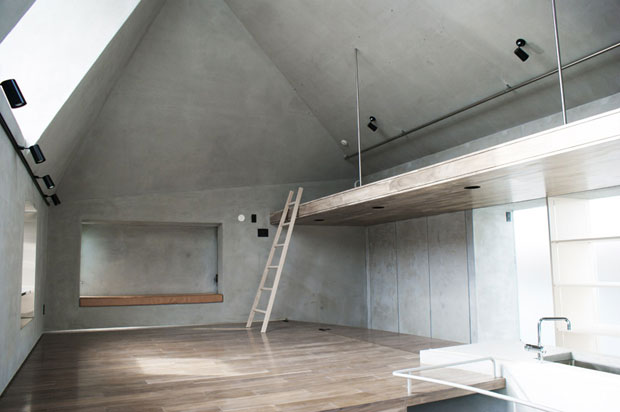
Concrete - the rehabilitation starts here
Urban Architecture Office's concrete FKI House in Japan is part of a growing trend - Phaidon has it covered
For anyone who grew up in the Eighties, concrete still has somewhat negative connotations: the mottled grey surfaces of whole swathes of grubby municipal buildings and the damp ‘Cardboard City’ underpasses in big cities are both conjured by the site of the material.

FKI House by Urban Architecture Office, Tokyo, Japan. Image courtesy of Urban Architecture Office
However, this is a little unfair: concrete has an illustrious history dating back to Roman times when pumice was used as aggregate, while its adaptability also facilitated the building of the Pantheon. Radical modern architecture has also reclaimed it to great effect. And as well as high profile, landmark buildings like Jørn Utzon ‘s Sydney Opera House, concrete has also been put to use in smaller, domestic settings - increasingly so in Japan.

FKI House by Urban Architecture office, Tokyo, Japan. Image courtesy of Urban Architecture Office
The latest experiment in this small-scale concrete work is the FKI House by Urban Architecture Office. Following on from the practice's ABE House (a small family dwelling in Tama-shi district) and situated in Hiagshikurume-shi, FKI is a narrow site (just 71.50 square metres) and rubs rough shoulders with neighbouring wooden structures. A ‘wood grain’ texture in the concrete responds to these surroundings, while the sharply angled gable roof mirrors the shape of more traditional local houses. The square oriel windows meanwhile, stand out from the building and flood the rooms with light.

FKI House by Urban Architecture Office, Tokyo, Japan. Image courtesy of Urban Architecture Office
FKI is designed to be lived in, and the hardness of the material is offset with curved internal walls and a 'poured-in-place' stairway. Admittedly, actually moving any of your possessions in might spoil the effect slightly, (and it’s maybe not an ideal place to live with a clumsy toddler). Still, it’s a radical improvement on the dull metal and glass boxes routinely flogged as ‘luxury apartment living’ in many cities.

FKI House by Urban Architecture Office, Tokyo, Japan. Image courtesy of Urban Architecture Office
We’ll be publishing our own tribute to Concrete later this year. Concrete, available for pre-order now, takes a fresh look at the world’s most versatile and abundant building material. Collating fascinating and beautiful concrete buildings by some of the most celebrated architects of the last century, it features familiar projects from Le Corbusier and Frank Lloyd Wright alongside work from some of the leading lights of contemporary architecture including Zaha Hadid, Herzog & de Meuron, and many lesser-known newcomers. Selected projects take you on a global tour of inspiring and intriguing structures: a German skatepark sits beside an Italian rooftop test track, a Japanese crematorium alongside a Portuguese swimming pool and a Brazilian government building next to a Chinese opera house. It's a beautiful and informative visual exploration of a material often considered dull and cold but actually full of spectacular potential.
We'd like to know what you think are the best (and worst) examples of concrete worldwide. Let us know your thoughts in the comments box below.